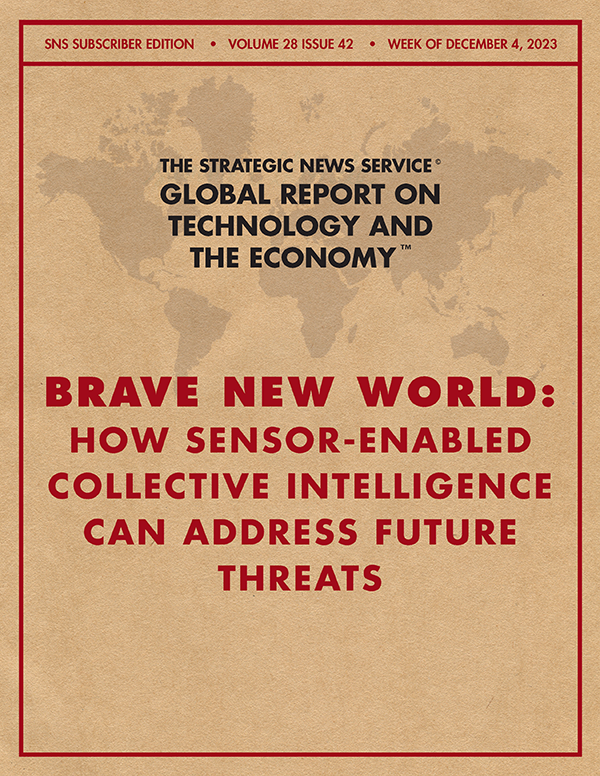
BRAVE NEW WORLD: How Sensor-Enabled Collective Intelligence Can Address Future Threats By Evan Anderson & Eliah Aranoff Spencer _____ Why Read: The explosion of sensor, AI, and monitoring technologies continues to accelerate. Forever changed are the day-to-day aspects of data collection and analysis, from the scientific process to intelligence collection, for better and for worse. This era of complexity and acceleration demands new ways of addressing opportunities and threats. It demands a new global immune system. _____
"Change is the law of life. And those who look only to the past or present are certain to miss the future." - John F. Kennedy "We assess impending events in terms of danger. In terms of the danger to the viability of the task and to the men and women who perform it. And the line we try to bear in mind at stages like this, is the line past which danger of both those sorts increases exponentially. It's called the Vantasner Danger Meridian, this line." - Amazon Original Series Patriot (satire) Over the course of the past few decades, countless new technologies have been developed that hold both immense promise and immense danger for the future of humankind. As our technological prowess leads to greater and greater highs, the capabilities we develop are ever more fraught: difficult to understand, almost always dual-use (meaning there are both civilian and military applications for the products), and often capable of evolving far faster than policy or academic study can keep up. The world is ever iterating. These days, those iterations are often viral, both digitally / sociologically and biologically. And that virality is becoming more challenging to monitor and control. But monitoring the emerging threats and opportunities of our era is necessary. For some, including our team at SNS, it is a calling. What to do about this rapid acceleration is the philosophical question that underlies most of the debates in tech we see today: from fears of uncontrolled artificial general intelligence (AGI) to the loss of truth to misinformation, from deepfakes and artificial video content to the rapid onset of the era of synthetic biology, we are everywhere faced with changes occurring so fast we simply cannot keep up. This is true down to the very ways in which we monitor the world. However sophisticated our modern surveillance and sensor technologies are becoming, our political ability to set boundaries or sensible limits is often slow-moving and far behind. So, too, have the technologies with which we change, rather than monitor, the nature of our world become hard to track and decipher. We find ourselves today at the edge of a precipice: while the likelihood of falling seems high, understanding how to safely reach the far side is elusive. In this issue, we will walk through some of the technologies behind these changes, and what can be done to protect positive outcomes while discouraging negative ones. For the past year, Strategic News Service and Future in Review have partnered with Resilient, a multiparty collective including national laboratories, universities, and private organizations designed to improve societal resilience in the face of emerging global threats. This is a project tailor-made for the goals of each of our organizations. And we are not alone: the US Centers for Disease Control and Prevention,, for example, also recognizes this issue. The group recently launched the Center for Forecasting and Outbreak Analytics (CFA) and its Insight Network, of which Resilient is one of 13 US hubs. The CFA promotes many of the goals described here. At this critical juncture, and mid-pandemic, smart people around the world are realizing an urgent need we all face: that of a global immune system. In brief, to borrow from the recent Future in Review conference theme: we will use this moment to move from crisis to opportunity.
|


